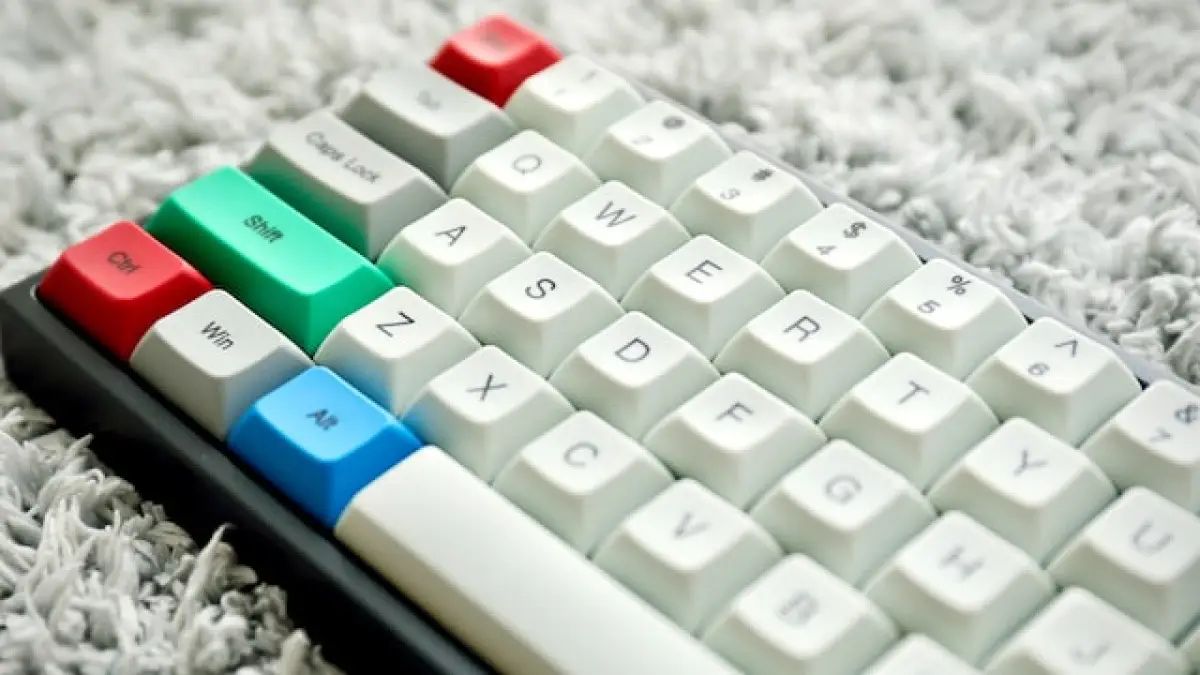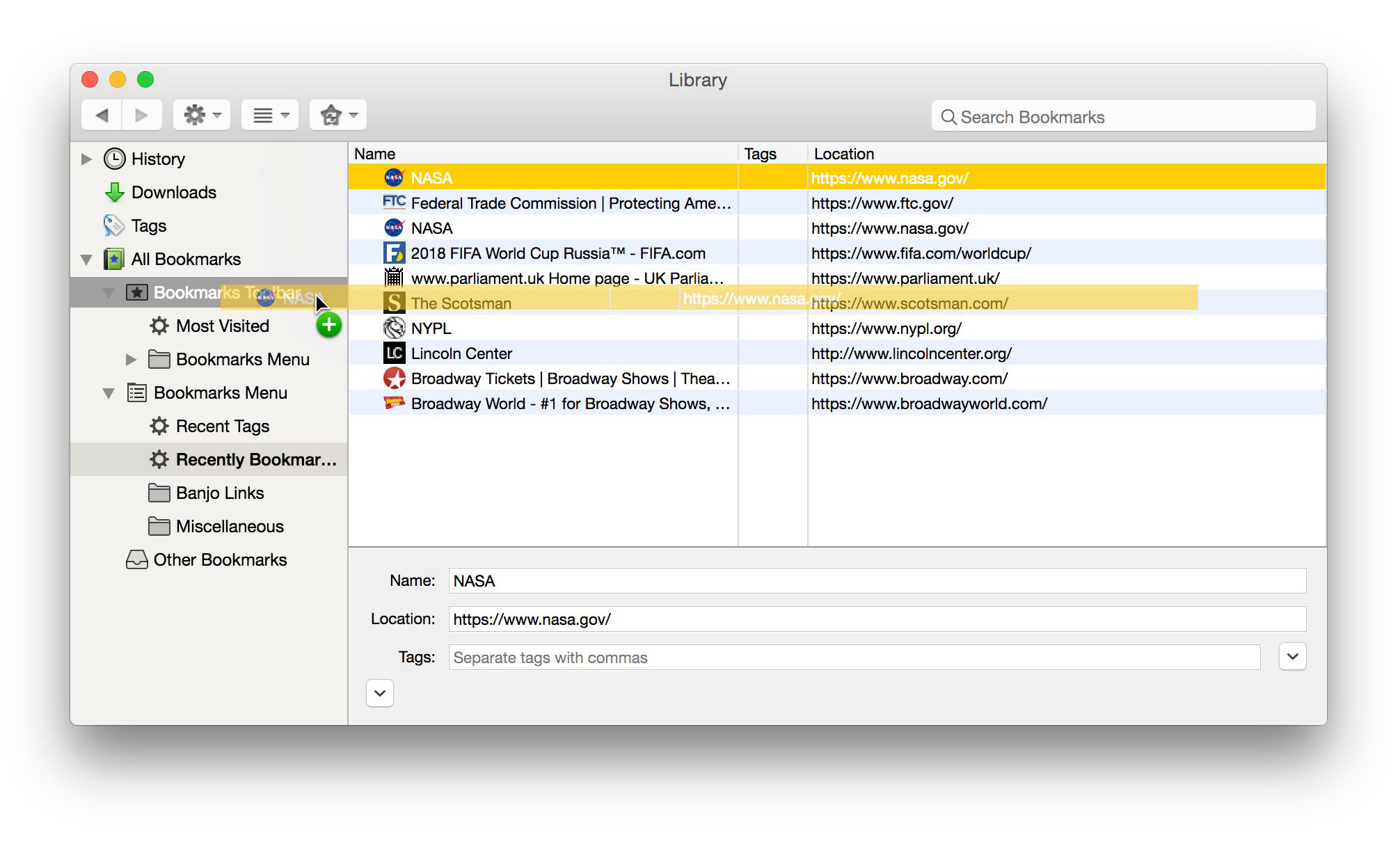Introduction
The keyboard is a ubiquitous device that we use every day, whether it’s typing a message on our smartphones, composing an email on a computer, or even playing a video game. At first glance, it may seem natural to assume that the keyboard layout follows a logical alphabetical order, given its purpose of inputting textual information. However, this assumption couldn’t be further from the truth.
The arrangement of keys on a keyboard, known as the keyboard layout, is not in alphabetical order. Instead, it follows a specific arrangement called the QWERTY layout. This layout has become the standard for most keyboards used around the world. You may have wondered why this peculiar arrangement exists and how it came to be.
In this article, we will explore the fascinating historical development of the QWERTY keyboard layout, discuss its purpose, and delve into the ongoing debate about its efficiency. We will also explore alternative keyboard layouts, such as the Dvorak Simplified Keyboard and the Colemak keyboard, and examine the influence of technology on keyboard design.
By the end of this article, you will gain a deeper understanding of why the keyboard is not in alphabetical order and appreciate the unique factors that shaped its design.
Historical Development of the QWERTY Keyboard Layout
The QWERTY keyboard layout has its roots in the early days of typewriters. The first commercially successful typewriter, invented by Christopher Latham Sholes in the 1860s, featured a keyboard layout similar to the QWERTY arrangement we are familiar with today.
Initially, typewriters had an alphabetical keyboard layout, but this design had its drawbacks. The mechanical keys were arranged in alphabetical order, making typing at high speeds problematic. The proximity of frequently used letters caused the typewriter’s metal arms to jam when typing quickly, leading to frustration and delays in writing.
To address this issue, Sholes, along with his associate Carlos Glidden, experimented with different keyboard layouts to mitigate the jamming problem. They eventually developed the QWERTY layout, named after the first six letters in the top row of the keyboard.
The QWERTY layout was specifically designed to separate commonly used letters and reduce the likelihood of jamming. The placement of letters was strategically chosen to ensure that typists could type quickly and accurately without frequent intermingling of the mechanical arms.
Sholes received a patent for the typewriter, including the QWERTY keyboard layout, in 1878, leading to its widespread adoption by typewriter manufacturers. The QWERTY layout became the de facto standard, and as typewriters evolved and transitioned into keyboards for computers, the QWERTY layout persisted.
Interestingly, the reasons for the QWERTY layout’s success are partly due to market forces. Once the QWERTY layout gained traction and typewriters became popular, training and familiarity with the QWERTY arrangement made it difficult for individuals and businesses to switch to alternative layouts. This created a network effect, where the standardization of the QWERTY layout perpetuated its dominance.
While the QWERTY layout was initially developed to address mechanical jamming issues, advancements in technology have rendered this concern largely obsolete. Yet, despite the availability of alternative keyboard layouts, the outdated QWERTY layout persists in modern keyboards due to the inertia of tradition and the challenges associated with widespread adoption of new layouts.
The Purpose of the QWERTY Keyboard Layout
The QWERTY keyboard layout, despite its non-alphabetical arrangement, serves several important purposes that have contributed to its longevity and widespread adoption.
One of the key purposes of the QWERTY layout is to enhance typing efficiency. While it may seem counterintuitive at first glance, the non-alphabetical arrangement of keys actually helps to distribute the workload across the typist’s fingers more evenly. Commonly used letters are positioned in easily accessible locations, requiring minimal finger movement. This layout promotes faster typing speeds and reduces fatigue, especially for touch typists who can type without looking at the keys.
The QWERTY layout also takes into account the frequency of letter combinations and words in the English language. By placing commonly occurring letter pairs, such as “th” and “st,” on different sides of the keyboard, there is a reduced chance of typists’ fingers colliding, further improving typing speed and accuracy.
Another purpose of the QWERTY layout is compatibility and familiarization. The widespread use of the QWERTY keyboard layout across different devices, software, and operating systems makes it easier for individuals to switch between devices without having to relearn a new keyboard layout. This compatibility has been a significant factor in maintaining the dominance of the QWERTY layout despite the availability of alternative layouts.
Furthermore, the QWERTY layout also considers the traditional order of letters on typewriter typebars. In older typewriters, the order of letters on the typebars, which struck the paper to produce ink imprints, was arranged in a similar fashion to the QWERTY layout. As a result, the QWERTY arrangement allowed typewriter manufacturers to adapt the existing mechanical components to accommodate the new layout, ensuring a smoother transition from the alphabetical layout.
While the QWERTY layout has its advantages, it is not without its drawbacks. The arrangement of keys can lead to inefficient finger movements, particularly for common letter combinations. This has sparked the development of alternative keyboard layouts, which we will explore in the next section.
In summary, the purpose of the QWERTY keyboard layout is to maximize typing efficiency, minimize finger collisions, ensure compatibility, facilitate familiarization, and leverage existing mechanical components. These factors have contributed to the continued prominence of the QWERTY layout in today’s keyboards.
The Efficiency Debate: QWERTY vs. Alternative Keyboard Layouts
The efficiency of the QWERTY keyboard layout has been a subject of debate for decades. Critics argue that the non-alphabetical arrangement of keys in the QWERTY layout leads to inefficient typing and increased risk of repetitive strain injuries. In response, various alternative keyboard layouts have been proposed and developed.
One prominent alternative layout is the Dvorak Simplified Keyboard (DSK), invented by Dr. August Dvorak and his brother-in-law, Dr. William Dealey, in the 1930s. The Dvorak layout aims to optimize typing efficiency by placing the most commonly used keys on the home row, where the typist’s fingers naturally rest. This arrangement minimizes finger movement and strain, increasing typing speed and reducing the potential for repetitive stress injuries. However, despite its potential benefits, the Dvorak layout has struggled to gain widespread adoption, primarily due to the established dominance of the QWERTY layout.
Another alternative layout that has gained some traction is the Colemak layout. Designed by Shai Coleman in 2006, the Colemak layout seeks to strike a balance between typing efficiency and ease of transition from the QWERTY layout. It rearranges a few key positions from the QWERTY layout while keeping most of the keys in their original positions. This layout aims to improve typing speed and reduce finger movement without requiring users to relearn the keyboard layout from scratch.
Proponents of alternative layouts argue that they offer tangible advantages over the QWERTY layout. Studies have shown that alternative layouts can indeed improve typing speed and reduce errors when users reach a higher level of proficiency. However, the benefits of alternative layouts may vary depending on individual typing styles, preferences, and the amount of time invested in learning and adaptability.
Despite the logical appeal of alternative layouts, the QWERTY layout has remained dominant due to several reasons. First, the QWERTY layout has become deeply ingrained in the muscle memory and typing habits of millions of users worldwide. Transitioning to an alternative layout requires significant time and effort, which many people are unwilling or unable to invest. Additionally, the widespread compatibility of the QWERTY layout across devices and operating systems makes it more convenient for users to stick with the familiar layout.
In recent years, advancements in technology have led to the emergence of virtual and touchscreen keyboards, further blurring the traditional layout boundaries. These modern interfaces allow for more flexibility in customizing keyboard layouts, opening up possibilities for personalized arrangements tailored to individual preferences and typing patterns.
While the debate over keyboard efficiency continues, it is clear that the QWERTY layout, despite its shortcomings, remains deeply rooted in our typing culture. The existence of alternative layouts provides an option for those willing to explore and invest in more efficient typing methods, but the widespread adoption of these layouts continues to face challenges.
Psychological Factors in Keyboard Layout Design
When designing a keyboard layout, it is crucial to consider the psychological factors that influence user experience and typing efficiency. These factors play a significant role in ensuring that the layout is intuitive, comfortable, and conducive to proficient and error-free typing.
One psychological factor to consider is the concept of muscle memory. Muscle memory is the ability to perform a task without conscious effort due to repeated practice. The QWERTY layout, despite its inefficiencies, has become deeply ingrained in the muscle memory of typists worldwide. Switching to an alternative layout disrupts this muscle memory and requires users to invest time and effort in relearning the new layout. Therefore, any new layout should aim to strike a balance between efficiency and maintaining a level of familiarity that minimizes the learning curve for users.
Ergonomics also plays a crucial role in keyboard layout design. Typing for prolonged periods can lead to discomfort, fatigue, and repetitive strain injuries. The arrangement of keys should consider human anatomy and ergonomics, placing frequently used keys within easy reach of the fingers and minimizing unnecessary hand and finger movement. Alternative layouts like the Dvorak and Colemak layouts specifically address ergonomics by placing commonly used keys on the home row, reducing finger travel distance and strain.
Cognitive factors should also be considered when designing keyboard layouts. Human cognitive processes, such as decision-making, attention, and memory, influence typing speed and accuracy. The arrangement of keys should take into account the cognitive load required to locate and press keys, ensuring that frequently used keys are easy to find and that the layout promotes efficient finger movement. Enhancing cognitive efficiency can lead to smoother typing experiences and reduce mental fatigue.
Another psychological factor to consider is user preference. Different individuals may have varying preferences when it comes to keyboard layouts. Some users may prefer a layout that emphasizes speed, while others may prioritize comfort or ergonomics. Keyboard customization options, such as programmable keys or software-based remapping, allow users to personalize their layouts based on their preferences and individual typing styles. These customization options can enhance user satisfaction and performance by catering to their unique needs.
Lastly, the aesthetics of a keyboard layout can have a psychological impact on the user. Visual design elements, such as key labeling, font type, and overall layout aesthetics, can influence the perceived usability, attractiveness, and user engagement. A visually appealing and well-designed layout can enhance the user’s overall experience and make typing a more enjoyable activity.
In summary, psychological factors are essential considerations in the design of keyboard layouts. By understanding and incorporating principles of muscle memory, ergonomics, cognitive efficiency, user preferences, and aesthetics, keyboard layouts can be optimized to enhance typing efficiency, comfort, and user satisfaction.
The Dvorak Simplified Keyboard Layout
The Dvorak Simplified Keyboard (DSK) is an alternative keyboard layout designed to optimize typing efficiency and reduce finger movement and strain. It was invented by Dr. August Dvorak and his brother-in-law, Dr. William Dealey, in the 1930s. The Dvorak layout seeks to improve upon the limitations of the QWERTY layout by placing commonly used keys on the home row, where the typist’s fingers naturally rest.
The Dvorak layout is based on several principles. One key principle is the distribution of letters to minimize finger movement. Commonly used keys, including vowels and the most frequent consonants, are positioned on the home row, allowing for efficient typing without the need for finger stretching or reaching. Letters that tend to appear consecutively, such as “th” and “st,” are placed on opposite hands, further reducing hand and finger strain.
In contrast to the QWERTY layout, the Dvorak layout aims to prioritize the use of the stronger and more dexterous fingers. The strongest fingers (the index and middle fingers) are responsible for the majority of keystrokes, while the weaker fingers (such as the pinky) are assigned fewer and less commonly used keys. This design reduces the risk of overworking the weaker fingers and helps maintain a more natural and comfortable typing rhythm.
Research has shown that the Dvorak layout can lead to increased typing speed and improved accuracy for proficient users. The optimized placement of frequently used keys on the home row reduces finger movement and the need to shift hands, resulting in smoother and faster typing. Additionally, the layout’s emphasis on alternating hands and utilizing stronger fingers contributes to reduced fatigue and potential for repetitive strain injuries.
Despite its potential benefits, the Dvorak layout has faced challenges in achieving widespread adoption. One obstacle is the established dominance of the QWERTY layout that has become deeply ingrained in the muscle memory and typing habits of users worldwide. The inertia and the cost associated with transitioning to a completely different layout have hindered the Dvorak layout’s popularity.
Furthermore, the availability of the Dvorak layout on standard keyboards and devices can be limited, making it less accessible compared to the QWERTY layout. While software-based solutions and custom keyboards exist, the widespread compatibility of the QWERTY layout across devices and operating systems makes it more convenient for users.
Despite these challenges, the Dvorak layout continues to have a dedicated following among typing enthusiasts, ergonomics advocates, and individuals seeking to improve their typing speed and comfort. The layout’s emphasis on efficiency and ergonomics highlights the ongoing interest and exploration of alternative keyboard layouts as potential alternatives to the QWERTY standard.
The Colemak Keyboard Layout
The Colemak keyboard layout is an alternative keyboard layout introduced in 2006 by Shai Coleman. It was designed to strike a balance between typing efficiency and ease of transition from the QWERTY layout. The Colemak layout aims to improve typing speed and reduce finger movement while maintaining a level of familiarity for users.
The Colemak layout retains most of the QWERTY layout’s letter positions, making it easier for users to adapt to the new layout. However, it makes a few key rearrangements to optimize efficiency. One notable change is the swapping of the positions of the “A” and “N” keys, which places the most commonly used consonant, “N,” on the home row, and the less frequently used “A” in a less prominent position.
An important principle in the Colemak layout is to keep the frequently used keys on the home row while minimizing finger movement. The layout focuses on utilizing the stronger and more dexterous fingers for commonly used keys, reducing strain on the weaker fingers. Additionally, letter combinations such as “TH” and “ST” are positioned on different hands to promote efficient and comfortable typing.
Due to its similarities to the QWERTY layout, the learning curve for transitioning to Colemak is relatively gentle. Users with a strong foundation in touch typing can adapt to the layout with practice and minimal adjustments. This ease of transition has contributed to the popularity of the Colemak layout among those seeking an alternative to QWERTY.
The Colemak layout has gained recognition for its potential benefits in terms of improved typing speed and reduced finger movement. Studies have shown that proficient Colemak typists can achieve comparable or even faster typing speeds compared to QWERTY users. The layout’s efficient distribution of commonly used letters across the home row and finger-friendly positioning of key letter combinations contribute to increased typing efficiency and reduced fatigue over time.
Despite its advantages, the main challenge for Colemak’s wider adoption lies in its relative obscurity and the dominance of the QWERTY layout. Modifications to traditional keyboards or software remapping are often necessary to switch to the Colemak layout, making it less accessible and convenient for everyday users.
However, the growing interest in alternative layouts and the availability of software-based solutions have allowed Colemak to garner a dedicated community of users. Custom keyboards, keycap sets, and tools specifically designed for Colemak typists reflect the continuous exploration of efficient and ergonomic keyboard layouts as an alternative to the QWERTY standard.
In summary, the Colemak keyboard layout strikes a balance between typing efficiency and ease of transition from QWERTY. Its optimized arrangement of commonly used keys and focus on finger-friendly typing positions make it an appealing option for those seeking increased typing speed and reduced finger movement while maintaining a level of familiarity with traditional keyboard layouts.
Other Alternative Keyboard Layouts
In addition to the Dvorak and Colemak layouts, several other alternative keyboard layouts have been developed with the aim of improving typing efficiency and reducing fatigue or discomfort. While these layouts may not have gained as much prominence as Dvorak or Colemak, they offer unique approaches to keyboard design.
One such alternative is the Workman layout, created by OJ Bucao in 2010. The Workman layout aims to optimize typing speed by placing commonly used letters on the strongest fingers, similar to the Colemak layout. However, it also focuses on finger rolls, where adjacent keys are typed in a rolling motion, reducing the need for awkward finger stretches.
The Norman layout, developed by Dr. Helge Normann in the 1990s, also focuses on reducing finger movement. The layout employs a modular design with different sets of keys assigned to each finger, with the most frequently used letters positioned on the strongest fingers. The Norman layout aims to strike a balance between typing efficiency, ergonomic design, and ease of learning.
Another interesting alternative is the Asset layout, created by David Baker in 1999. The Asset layout features a unique circular design where the keys are arranged in concentric rings. The intention behind this layout is to minimize finger movement and reduce the strain caused by lateral finger motion. However, due to its unconventional design, the Asset layout has not gained widespread recognition.
There are also keyboard layouts tailored for specific languages, such as the Bépo layout for French, and the JCUKEN layout for Russian. These layouts aim to optimize typing speed and comfort by considering the linguistic characteristics and frequency of letter combinations in each language.
While these alternative layouts offer intriguing perspectives on keyboard design, their adoption has been limited due to the dominant presence of the QWERTY layout and the challenges associated with switching to a new layout. Additionally, the availability of hardware and software support for such layouts may vary, making them less accessible for everyday users.
Nevertheless, the existence of a diverse range of alternative keyboard layouts highlights the ongoing exploration and interest in improving typing efficiency and comfort. These alternative layouts provide options for users seeking to optimize their typing experience and reduce the risk of repetitive strain injuries. With advancements in technology and increased customization options, the potential for wider adoption and acceptance of alternative keyboard layouts may continue to grow.
The Influence of Technology in Keyboard Design
The rapid advancement of technology has had a significant impact on keyboard design, revolutionizing the way we interact with keyboards and shaping their form and functionality. From mechanical typewriters to modern touchscreen keyboards, technology has played a crucial role in enhancing typing experiences and expanding the possibilities of keyboard design.
One major influence of technology is the development of ergonomic keyboards. As our understanding of ergonomics has improved, keyboard manufacturers have incorporated ergonomic principles into their designs. Ergonomic keyboards are specifically engineered to reduce muscle strain and promote a more natural hand and wrist position while typing. Features such as split keyboards, angled key layouts, and integrated wrist rests are among the innovations aimed at improving user comfort and reducing the risk of repetitive strain injuries.
Advancements in materials and manufacturing techniques have also impacted keyboard design. Traditional mechanical keyboards utilized bulky mechanical switches, requiring a significant amount of force to actuate. However, the advent of thin membrane keyboards and scissor-switch mechanisms has allowed for slimmer and more compact keyboard designs, making them more portable and space-efficient.
Wireless technology has also revolutionized keyboard design, allowing for greater flexibility and freedom of movement. Bluetooth-enabled keyboards have become popular, eliminating the need for physical connections between keyboards and devices. Wireless keyboards have also opened up opportunities for ergonomic and split keyboard designs, enabling users to position their keyboards more comfortably without the constraints of wires.
Another area of influence is the rise of virtual keyboards and touchscreen technology. The widespread use of smartphones, tablets, and touch-enabled devices has led to the proliferation of virtual keyboards. These keyboards adapt dynamically to the context and input method, providing a seamless typing experience on touchscreens. The evolution of predictive text algorithms and artificial intelligence has also improved typing accuracy and efficiency on virtual keyboards.
Moreover, the advent of programmable and customizable keyboards has empowered users to personalize their typing experience. Programmable keyboards allow users to remap keys, assign macros, and create custom layouts, providing a tailored typing experience that aligns with individual preferences and needs.
Accessibility has also been positively influenced by technology in keyboard design. Specialized keyboards with large print, high contrast, or Braille markings have been developed to accommodate individuals with visual impairments. Additionally, alternative input methods, such as alternative key switches, speech recognition software, and eye-tracking technology, offer alternative means of interacting with keyboards for individuals with physical disabilities or limitations.
In summary, technology has played an influential role in shaping the design and capabilities of keyboards. Ergonomics, wireless connectivity, virtual keyboards, customization options, and accessibility features are just a few examples of how technology has revolutionized keyboard design. As technology continues to evolve, new innovations in keyboard design will continue to emerge, enhancing our typing experiences and allowing for more personalized and efficient interactions with these indispensable input devices.
Conclusion
The design of the keyboard, despite its lack of alphabetical order, is a unique and fascinating aspect of our daily lives. The QWERTY layout, with its historical roots and purposeful arrangement of keys, has become the standard for keyboards worldwide. While alternative layouts such as Dvorak and Colemak offer potential benefits in terms of typing efficiency and reduced strain, the dominance of QWERTY, muscle memory, and compatibility challenges have hindered their widespread adoption.
Psychological factors play a significant role in keyboard layout design. Considerations such as muscle memory, ergonomics, cognitive load, user preferences, and aesthetics contribute to the overall typing experience. Designers must strike a balance between optimizing typing efficiency and ensuring a comfortable and intuitive user interface.
Technology has had a profound impact on keyboard design, enabling advancements such as ergonomic keyboards, wireless connectivity, virtual keyboards, customization options, and accessibility features. These innovations have enhanced typing experiences, allowed for greater personalization, and catered to diverse user needs and preferences.
While the QWERTY layout remains deeply rooted in our typing culture, the availability of alternative keyboard layouts and the continuous exploration of keyboard design show that there is ongoing interest in improving typing efficiency and comfort. As technology continues to evolve, we can expect further innovations in keyboard design, offering users even more personalized and efficient ways to interact with their keyboards.

























